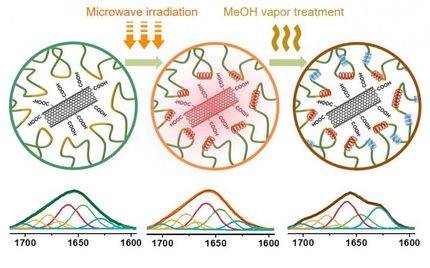It’s all about the sausage
Choosing the right proteins can improve the mouthfeel of vegetarian sausages
The right crack of the sausage is, not least, a matter of physics. A team from the Max Planck Institute for polymer research in Mainz has investigated how the properties of plant proteins influence the mouthfeel of vegetarian and vegan sausages. Using the findings this revealed, the first companies have already adapted their recipes to make the texture of their sausages more similar to those made from meat.

A team of researchers from the Max Planck Institute for Polymer Research has investigated how the mouthfeel of vegan and vegetarian sausages can be better approximated to that of meat-based products.
Photo by Yasin Arıbuğa on Unsplash
Summer is barbecue season, and these days, more and more vegetarian and vegan products are ending up on the grill. Sausages made of plant-based ingredients have, however, always been very different to those made from meat: The crack of a meat sausage, for example, differs greatly from that of its vegan counterparts. This is due to the distinct basis on which it is made, because in animal tissue, for example, the muscle proteins, fats and oils present emulsify in a completely different way to plant proteins.
“The mouthfeel of a sausage is a complex matter,” says Thomas Vilgis, group leader at the Max Planck Institute for Polymer Research. “Ultimately, there are many different physical processes involved here on different length scales – from the first bite to the mastication into a pulpy mass. This makes it very difficult for vegetarian and vegan alternatives to come close to the animal product.”
Predicting behavior during chewing
The researchers developed a model with which it is possible to make predictions about the physical behavior of sausages, for example during chewing. “This approach was not very common in the past. Instead, the sausage industry has primarily applied the principle of trial and error – in other words, people tried to improve the texture by testing things out.”
For the development of their model, the researchers examined the proteins in the ingredients and observed the sequence of amino acids as they did so. According to the studies, the key to mouthfeel is the network that is formed by the many proteins, for example those in animal products. This network then needs to be replicated as much as possible with vegan or vegetarian alternatives in order to achieve a similar mouthfeel. “In the end, though, we can only ever approximate the mouthfeel of meat sausages with vegan and vegetarian alternatives because plant proteins are structured very differently than those of meat,” explains Vilgis.
Sausage-makers have adapted their recipes for vegan sausages
To validate their model, the scientists simulated the chewing process and determined the forces with which the different sausage masses can be deformed. These measurements provide insights into how the sausages behave both when chewed and when processed with the tongue.
Using the theoretical model and the measurements, the researchers deduced how vegan and vegetarian sausages have to be supplemented or changed so that their texture could achieve a similar mouthfeel to that of meat sausages. The findings of the Mainz team have also already had practical consequences. One sausage producer has since used them as a basis for adapting his recipe for vegetarian and vegan sausages and optimizing it to achieve the typical crack of meat sausages.
Original publication
Other news from the department science
These products might interest you
Most read news
More news from our other portals
See the theme worlds for related content
Topic world Rheology
Rheology deals with the flow behavior and deformation properties of materials. In the chemical field, it is indispensable for understanding the consistency, viscosity and elasticity of liquids, gels and solids. Whether formulating paints, producing polymers or optimizing food textures, rheological properties influence how substances react, move and feel.

Topic world Rheology
Rheology deals with the flow behavior and deformation properties of materials. In the chemical field, it is indispensable for understanding the consistency, viscosity and elasticity of liquids, gels and solids. Whether formulating paints, producing polymers or optimizing food textures, rheological properties influence how substances react, move and feel.

































































